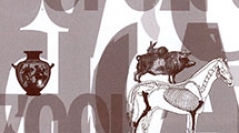

 Anthropozoologica
44 (1) - Pages 173-188
Anthropozoologica
44 (1) - Pages 173-188By at least 7000 calBC, hunter-gatherers were encamped upon stabilized sand dunes in steppic and semi-arid areas of northwestern South Asia. Within 4500 years, pastoral camps, agricultural settlements, and even the occasional urban complex could be found over parts of this same landscape. Investigation of animal bone remains from a few of these sites, together with consideration of recent studies of animal genetics, provide a basis for understanding some of the processes involved in this prehistoric transformation. Discussion in this paper focuses on the dune-top site of Loteshwar in North Gujarat, for which a strategic dating program has generated a series of AMS C14 determinations spanning five millennia of first hunter-gatherer and then pastoral occupations. Archaeofaunal remains demonstrate a change in animal use from an exclusive focus on wild animals to the exploitation of domestic cattle. The evidence for both wild and domestic cattle at Loteshwar indicates that North Gujarat is an important area to investigate as one of the multiple centers for zebu (Bos indicus) domestication that are suggested by genetic research on modern forms. In contrast, because of the absence of any evidence for their wild relatives having been in the region, it is clear that domestic sheep and goat were brought into the North Gujarat region, probably from areas to the Northwest.
South Asia, North Gujarat, Loteshwar, site formation processes, Bos indicus, cattle domestication, pastoralism, Microlithic, Chalcolithic, animal genetics.